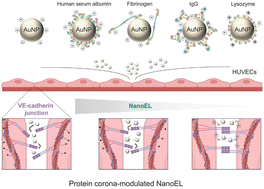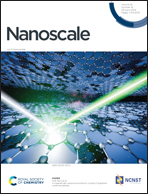Controlling nanoparticle-induced endothelial leakiness with the protein corona†
Abstract
Understanding nanoparticle-cell interaction is essential for advancing research in nanomedicine and nanotoxicology. Apart from the transcytotic pathway mediated by cellular recognition and energetics, nanoparticles (including nanomedicines) may harness the paracellular route for their transport by inducing endothelial leakiness at cadherin junctions. This phenomenon, termed as NanoEL, is correlated with the physicochemical properties of the nanoparticles in close association with cellular signalling, membrane mechanics, as well as cytoskeletal remodelling. However, nanoparticles in biological systems are transformed by the ubiquitous protein corona and yet the potential effect of the protein corona on NanoEL remains unclear. Using confocal fluorescence microscopy, biolayer interferometry, transwell, toxicity, and molecular inhibition assays, complemented by molecular docking, here we reveal the minimal to significant effects of the anionic human serum albumin and fibrinogen, the charge neutral immunoglobulin G as well as the cationic lysozyme on negating gold nanoparticle-induced endothelial leakiness in vitro and in vivo. This study suggests that nanoparticle-cadherin interaction and hence the extent of NanoEL may be partially controlled by pre-exposing the nanoparticles to plasma proteins of specific charge and topology to facilitate their biomedical applications.

- This article is part of the themed collection: 2024 Nanoscale HOT Article Collection


 Please wait while we load your content...
Please wait while we load your content...